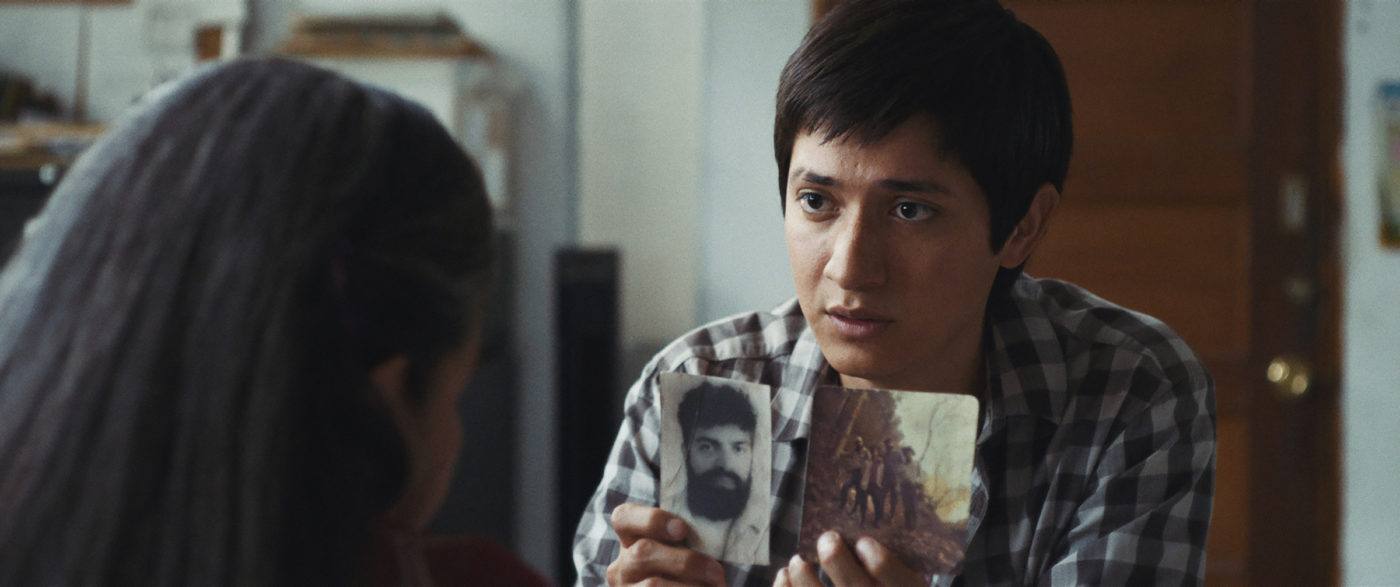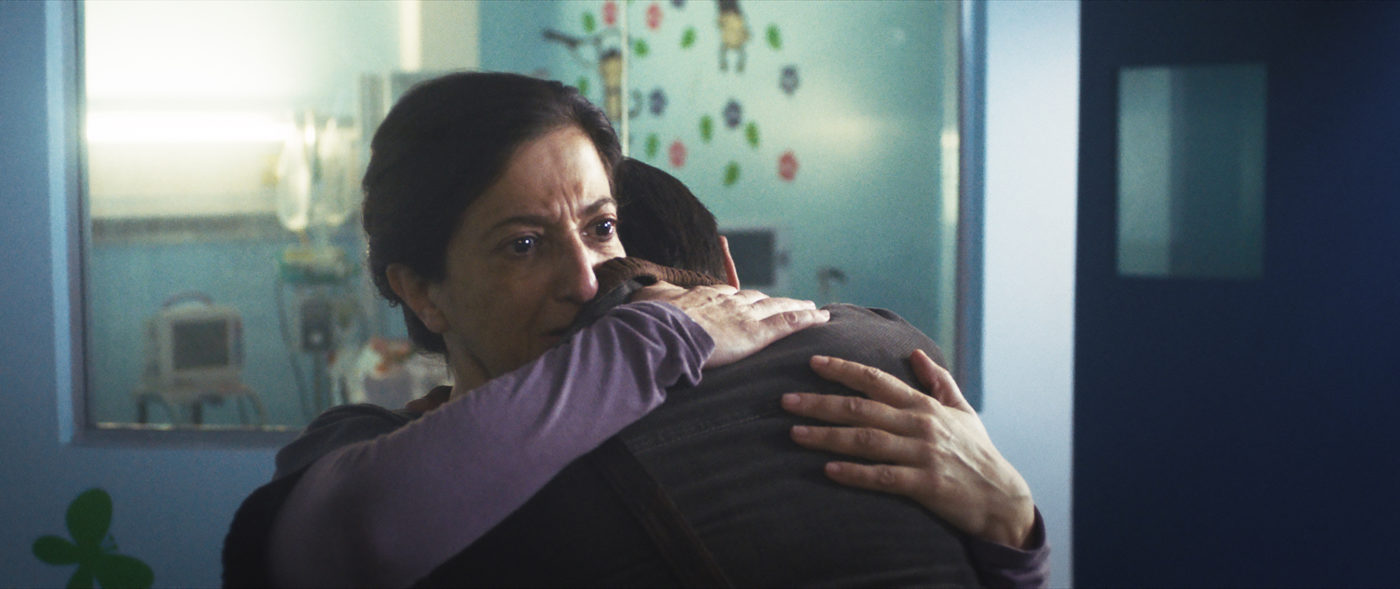César Díaz’s feature debut Our Mothers (Nuestras madres) is the latest entry in a growing list of films by a new generation of Guatemalan filmmakers that tackle head-on the legacy of a decades-old civil war that led to the death and disappearance of hundreds of thousands of mostly indigenous citizens by the country’s military regime. The list includes such films as Distancia (2011) by Sergio Ramírez, Julio Hernández Cordón’s Polvo (2012) and most recently Jayro Bustamante’s La Llorona (2019) and his cousin Ana Isabel Bustamante’s highly personal documentary Asphyxia (2018). Outside of Jayro’s work, who is single-handedly creating a production, distribution and exhibition infrastructure for films in Guatemala, most of these films are not seen outside the festival circuit (and in most cases, niche festivals at that). Bustamante’s critically-acclaimed and award-winning Ixcanul (2015) and Tremors (2019) may have opened the door a tiny itsy bitsy in the United States to films like Our Mothers to sneak through (Díaz, in fact, edited both Ixcanul and Tremors). But for many cinephiles and filmgoers, Guatemala, like most of Central America, is still terra incognita when it comes to their cinema.
Our Mothers may not change that scenario much but its virtual theatrical release by distributor Outside Pictures this week offers stay-at-home movie lovers the ideal opportunity to learn about a country and a harrowing event they may know nothing about. Winner last year of the Camera D’Or at the Cannes Film Festival and of the Silver Hugo in the New Directors Competition at the Chicago International Film Festival, Our Mothers centers on Ernesto (Mexican actor Armando Espitia), a young anthropologist working for the understaffed and overwhelmed Forensic Foundation, the agency in charge of excavating the hundreds of mass graves littering the country, where the remains of the victims of the military regime are buried. Ernesto’s father, a guerrilla leader, is among the disappeared; his mother Cristina (Emma Dib) refuses to testify in the trial against the generals responsible for the mass killings for reasons that are made clear by the film’s climax. Ernesto reluctantly agrees to take down the testimony of Nicolasa (Aurelia Caal) who has traveled all the way from the mountains to formally request the exhumation of her husband’s remains at a mass grave near her village.

Her testimony is as devastating as the dozens Ernesto has already recorded but it is also unique: Nicolasa carries with her a photo of her husband posing with guerrilla leaders, one of whom bears a strong resemblance to his father. Ernesto disobeys his immediate supervisor’s order and his mother’s advice, and travels to Nicolasa’s village where he tries to convince those in charge of the grounds where the bodies are buried to let him in. Discouraged, Ernesto returns to the capital, but not without first taking down the additional testimonies of the village’s women at Nicolasa’s behest. Outside of a couple of shots of Ernesto setting up, Díaz opts instead to show these women in a series of individual portrait-like medium shots to close-ups, each woman staring silently, defiantly, with dignity at the camera, their faces bearing witness to the suffering, to the pain they endured and to their determination.
A more traditional approach to the story would have our hero encountering all kinds of obstacles and even potential danger in his quest to help these villagers and find his father. But the movie shifts its focus in the second half when, after being reprimanded by his boss, Ernesto goes back to work at the mass grave in the city’s municipal graveyard. Ernesto’s search for answers and his efforts to convince his mother to tell her side of the story take center stage at the expense of these women and their storyline. As in the first half, Díaz shies away from tried and true conventional narrative beats. His approach is far more organic, far more restrained, far more true-to-life. It’s more show than tell: he is not interested in hitting you over the head. Díaz goes back to portraying Ernesto picking the boxes full of bones unearthed at the cemetery, making love to a barmaid after having one too many beers, celebrating his mother’s birthday (where her guests sing “The Internationale” while Cristina holds back tears) or taking his mother to the beach where they elusively talk about his father. And when Ernesto’s supervisor breaks the news of his father’s remains being discovered and Ernesto learns his true identity after a DNA test, Díaz keeps his camera discreetly at a distance.

The film may be called Our Mothers and Díaz wholeheartedly pays tribute to these women. But in its schematism, the two-act structure sometimes works against it. It sometimes undermines any emotional attachment we could develop with the characters. Ernesto himself comes across as a fragile being, impulsive at times, but always this close to breaking down given the sheer magnitude of his job and the revelations that come with it. His quest, his story, at times overpowers that of the titular mothers. Fortunately, Caal’s sheer presence and spiritual strength as well as that of the other non-professional actresses Díaz cast for the film, etch themselves in our memory. They take over the screen in a way that not even Emma Dib, in her underwritten role, can. They command your attention. And yet, Cristina’s testimony at the trial packs quite a punch, especially in the way Díaz sets it up: a long tracking shot of several women seated in the court chamber’s front row until it stops on Cristina: her facial muscles trembling as she relives her traumatic experience. Moments like this, and movies like Díaz’s, serve as a reminder that Guatemala, like so many other Latin American countries that have suffered under military regimes, still has to come to terms with its immediate past.
Our Mothers will stream from May 1-8 as part of the Gene Siskel Film Center of the School of the Art Institute’s Film Center from Your Sofa program. The program is the product of a partnership between the Film Center and several distributors to present new and noteworthy films, some of which had already been scheduled to play at the Center before the state’s Stay at Home orders forced it to close its doors temporarily. The distributors split the ticket price equally with the Film Center to help them during the pandemic.